
Photo: ReeldealHD Images / Adobe Stock
When styling your Christmas lights, you’ve got options. Both LED and incandescent Christmas lights will get the job done, but there are some key differences you should know. For one, LED lights are the more energy-efficient option, while incandescent lights win on being the more inexpensive option.
Before you start hanging lights this holiday season or pay for the cost of professionally installing Christmas lights, consider some of the key differences between LED and incandescent lights.
On This Page:
- What’s the Difference Between Led and Incandescent Christmas Lights?
- LED vs. Incandescent: Which is Better?
- LED Drawbacks
- Incandescent Drawbacks
What’s the Difference Between LED and Incandescent Christmas Lights?
The main difference between LED and incandescent Christmas lights is how they use energy.
Incandescent Christmas Lights

Photo: Lost_in_the_Midwest / Adobe Stock
Incandescent Christmas lights use a filament (wire or thread that lights up when the system is turned on) that produces the glow. These bulbs emit both light and heat.
LED Christmas Lights
LED lights use light-emitting diodes that produce the light. A diode is something that conducts electric current in one direction; in this case, the direction is light. This difference makes LED typically the more efficient and durable option.
LED Drawbacks
One of the key drawbacks when comparing LED bulbs to incandescent bulbs is price. LED lights tend to have a higher initial cost. However, if you opt for LED lights, they may end up being the more affordable option in the end due to the energy you’ll save and money on repairs and replacements.
More LED drawbacks include:
- Blue light emitted can affect your sleep or even cause headaches.
- LED lights will potentially be less visible in comparison to incandescent lights.
Incandescent Drawbacks
Incandescent bulbs become hot, so you’ll have to be careful that you don’t leave them on when they’re not being attended to.
Some additional incandescent drawbacks include:
- These bulbs are less energy-efficient than LED bulbs.
- Incandescent bulbs are less durable than LED, which means you’ll have to replace them more often.
- Incandescent bulbs are glass, so they’ll likely require more maintenance and care.
LED vs. Incandescent: Which Is Better?
When deciding which lights to use, you’ll want to consider all factors, including appearance, cost, durability, energy-efficiency and installations.
Appearance
Both LED and incandescent christmas lights are available in all kinds of colors, sizes, and styles. Previously, LED lights were dimmer than incandescent bulbs, but today both bulbs now produce a similar level of brightness.
Best appearance: It’s a tie
Cost
LED lights are typically more expensive than incandescent lights initially, but over time, you’ll likely save money due to lower energy bills—plus, LED lights don’t need to be replaced as often as traditional lights.
On average, LED bulbs cost between $6 and $25 per strand, while an average incandescent strand costs between $4 and $10.
Most affordable: Incandescent
Durability
LED bulbs tend to last much longer than incandescent bulbs; LED lights will grant you around 50,000 hours, while incandescent bulbs usually last for around 1,000 hours. With LED lights, you don’t have to worry about color fading, while incandescent bulbs will burn out over time.
Most durable: LED
Energy Efficiency
A major consideration when choosing between incandescent and LED bulbs is efficiency. Using LED lights will reduce your energy bill and decrease your carbon footprint.
LED lights use less energy than incandescent lights. This is because they produce such a little amount of heat when turned on in comparison to incandescent lights. So, LED bulbs utilize more electricity toward producing light, rather than heat. According to the U.S. Department of Energy, compared to incandescent lights, LED lights use up to 75% less energy and last 25 times as long.
In addition, LED bulbs produce fewer greenhouse gases than incandescent bulbs, making LED lights the more environmentally-friendly choice.
Most energy-efficient: LED
Installation Ease
The difference in installing LED versus incandescent lights depends on the type of cord used. If both use the same insulated cord, then installation is similar.
Sometimes LED lights use a copper strand. This makes installation more difficult, since the strand is thinner and thus can get tangled. Also, LED strands sometimes are shorter than incandescent strands, so you’ll need extension cords, making the installation a bit more work than installing incandescent strands.
In both cases, you can always opt to contact a local professional light installer. When you hire a professional, you can expect the cost for professional Christmas light installation to range from $220 to $650 on average.
Easiest to install: Incandescent
Maintenance

Photo: Jen Grantham Photography / Stocksy / Adobe Stock
LED lights are made of plastic while incandescent lights are glass, so there’s more risk of breaking or damaging incandescent bulbs. With LED bulbs, you don’t need to worry about shattering or breaking them.
Additionally, LED bulbs don’t ever burn out, so you don’t need to worry about replacing them or any fuse issues.
Incandescent lights require a bit more patience. You’ll need to handle them with more care, maybe spending time wrapping them when you put them away. You’ll also have to replace the bulbs when they burn out. Plus, you need to watch out for the bulbs breaking, which can happen if you are consistently leaving incandescent bulbs on for several hours at a time.
If you’re planning to have Christmas lights outside, LED bulbs are probably the better option, since they’re less likely to be damaged by the elements.
Easiest to maintain: LED
Heat
While incandescent Christmas lights become hot to the touch after several hours, LED bulbs remain cool. Extremely hot bulbs may be hazardous and cause house fires. This is why incandescent bulbs must be unplugged after several hours or when unattended.
Heat level: Incandescent
Start Your Holiday Decoration Project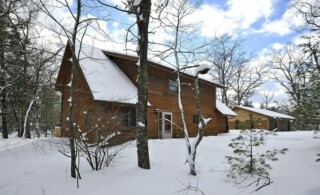 Protect Yourself: Don’t Lose Power This Winter
Protect Yourself: Don’t Lose Power This Winter 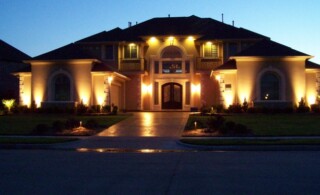 Preparing for Lighting Installation
Preparing for Lighting Installation 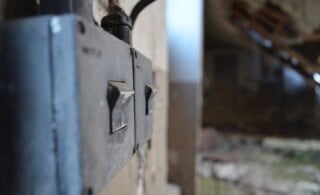 How to Wire a Light Switch
How to Wire a Light Switch 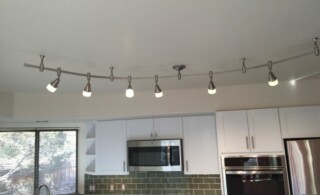 Track Facts: What To Know about Track Lighting Fixtures
Track Facts: What To Know about Track Lighting Fixtures 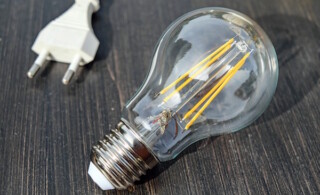 The History of the Light Bulb in Your Home
The History of the Light Bulb in Your Home 

Are You Familiar With This Topic? Share Your Experience.